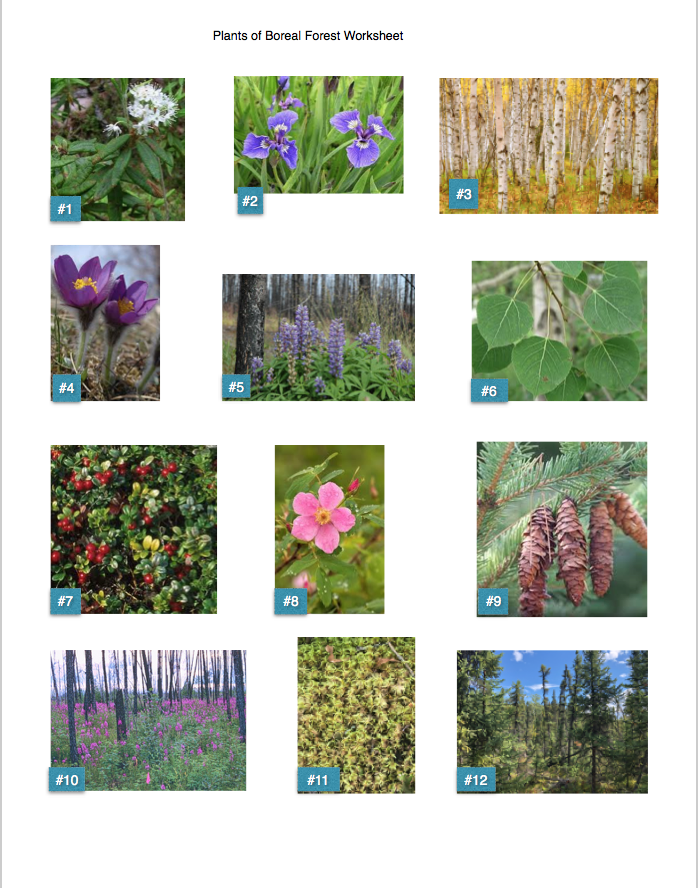Self Directed Lesson 1
from ROLE OF FIRE IN ALASKA
An Overview Reading the Alaskan Environment (K-12)
In an outdoor activity, students closely observe their environment.
Identifying Objects (3-8)
Students learn about dichotomous keys and how they are used to identify plants.
Critter Search (K-12)
Students look for evidence of small animals and their tracks in an outdoor setting.
The Summer Plant Keys (6-12)
Student use a game format to construct a dichotomous key representing the summer plants of the boreal forest.
Blind Walk (K-12)
In an outdoor activity, students explore the local ecosystem using only their sense of touch and smell.
Transect Study (6-12)
Students set up transects near the school to systematically study the local ecosystem.
Making the Forest and Tundra Wildlife Connection (5-12)
Students participate in an active game to form food chains of the boreal forest.
The Succession Race (5-8)
Students play an active game in which they pretend they are plants. As the plants progress through boreal forest succession they
encounter conditions which affect them.
Boreal Forest Succession (5-8)
Students observe and record the different stages of forest succession around their school grounds, and illustrate succession
in the boreal forest by making field notebooks and a mural.
Living on the Edge (5-8)
Students play a game to create a vegetation mosaic and discuss their influence on wildlife diversity.
Tree Leaf Relay (3 – 12)
Students learn the identifying characteristics and names of several Alaska tree species by examining leaves, and participating in a relay race.
Tree History – Your History (K – 12)
Students learn dendrochronology techniques to determine the age of trees and the dates that trees died or were logged, as well
as the dates of important forest events.
Concepts covered in Unit I: Forest and Tundra Ecology
• Location of ecosystems in Alaska
• Non-living characteristics of each
• Living characteristics of each
• Identification of living things via dichotomous keys
• Food chains, food webs, producers, and consumers
• Wildlife population dynamics
• Natural agents of change boreal forest and tundra ecosystems • Boreal forest succession
• Importance of vegetation mosaic to wildlife diversity
• Field trip ethics
• Use of a Field Notebook
Read: PLT introduction “Welcome to Fire in Alaska”
Watch: PLT video Lesson 1 “Forest & Tundra Ecology”
Common Plants of the Boreal Forest
Trees of the Boreal Forest
Taxonomy & Classification
Read: Identifying Objects (Role of Fire)
Homework: After studying the two plant videos (see above), please identify the plants pictured below.
EXTRA ACTIVTY
Making the Forest Wildlife Connection
Grade Level : 5-12
Skills: Classification, Predicting
NGSS: 5-LS2-1
MS-LS1-6 / MS-LS1-7 / MS-LS2-1 / MS-LS2-2 / MS-LS2-3 / MS-LS2-4 / MS-ESS3-4
Learning Objectives: Students will be able to form boreal forest and tundra food webs


